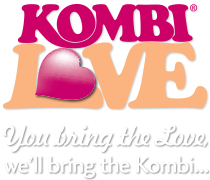The End of an Era
Sep 28, 2013
It is with heavy hearts that we have read this week that production of the Type 2 VW Kombi campervan will cease at the end of the year. A factory in Brazil was the last outpost still manufacturing the much-adored, iconic Kombi bus. Due to new safety laws due to come into effect on the first day of 2014, all motor vehicles in Brazil must have airbags and antilock braking systems - features that just not cannot be adapted or re engineered into the Kombi design.
The Volkswagen Type 2 is officially, depending on the body type, known as Transporter, Microbus or Kombi. But then even the Kombi’s name is varied across the world: The Combi in Mexico; VW-Bus, Bulli or Bully in Germany; a Vee-Dub, hippie van or Combie in the US, and of course, here in Australia, we call it a Kombi from the German ‘Kombinationskraftwagen’ which means combined-use vehicle ...And don’t even get us started on the names for all the variations of Kombi usually based on the number and style of its windows!
The VW Type 2 has gained a lot of admirers since its birth just after the end of WWII. It was originally a motorised trolley built from stripped down VW Type 1 chassis and bits, used to transport parts (the VW Beetle) around the large factory. A Dutch VW importer named Ben Pon saw the improvised bus and sketched a boxy design with the driver at the very front, above the front road wheels. Eventually a prototype was made, tested and improved upon and in 1949 the Chief Executive Officer Heinz Nordhoff approved the Type 2 for full-scale production, available in two models: the Kombi and the Commercial.
The basic design remained the same for decades, but many variations have been introduced. The Type 2 is divided into first and second generations. The first generations were manufactured until 1967 in Europe and 1975 in Brazil. They all had split windscreens (Splitties) and really early versions were called Barndoors due to their enormous rear engine covers. The second generations introduced in 1967 were heavier with whole windscreens. Its common nicknames are Breadloaf and Bay-window, or Loaf and Bay for short.
Our Kombis are second generation Deluxe Microbuses and of this generation there were two model types. Models before 1971 are often called the T2a (or “Lowlight” Kombi), while models after 1972 are called the T2b (or “Highlight” Kombi). Nicknames Lowlight and Highlight refer to the position of front indicators, being either low or high mounted on the vehicle front. George rolled off the production line in 1971 and Mildred in 1970. Although they have both received extensive renovation, we have always used genuine, authentic parts and suppliers that love our Kombis as much as we do. George & Mildred have been renovated to their former glory, with a touch of modern refinements. They have performance VW engines with twin Weber Carburetors, iPod connected hi-fi systems, ceramic coated exhausts for extra bling, finished off with chromium heart shaped mufflers for that cheeky note!
So, if you want to experience a vintage Kombi up close and personal, our Kombi vans are available to hire. Whether for a special occasion, debutante, winery tour, or wedding or just to cruise through town looking cool you know who to hire - George and Mildred are waiting for your call!










